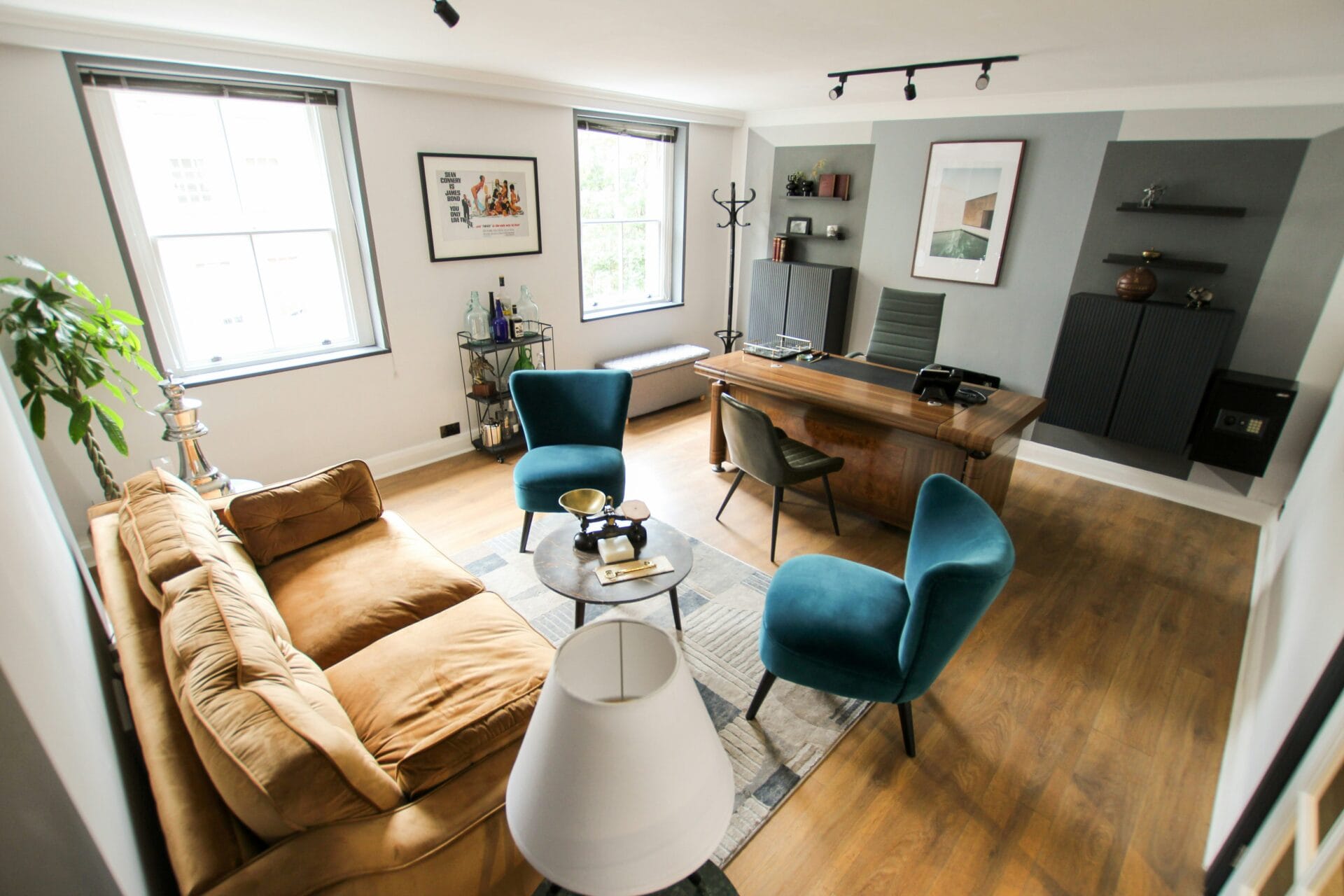Introduction to Office Furniture Design
Office furniture design plays a pivotal role in shaping the functionality and aesthetic appeal of various business environments. It encompasses a range of components, from desks and chairs to storage solutions and collaborative spaces, all crafted to enhance work efficiency while reflecting the company’s identity. Thoughtful design choices can significantly impact user comfort, boosting employee morale and productivity. Furniture that is ergonomically designed helps in reducing fatigue and the risk of injury, ultimately contributing to a healthier workplace.
In addition to promoting physical well-being, office furniture also serves as a critical element in establishing the brand image. The colors, materials, and styles chosen for office furniture can align with a company’s mission and values, creating a cohesive brand representation that resonates with clients and employees alike. For instance, a modern tech firm might opt for sleek, minimalistic furniture to showcase innovation, while a law firm may choose classic, elegant pieces to convey professionalism and stability.
Moreover, the arrangement of furniture within an office space can influence how teams collaborate and interact. Open floor plans encourage communication and teamwork, while designated quiet areas provide privacy for focused tasks. Flexible furniture arrangements enable businesses to adapt their spaces for diverse functions, from meetings to social gatherings. As organizations continue to evolve, the significance of a well-planned office furniture design becomes increasingly apparent, not only as a means of furnishing the workplace but also as a strategic element that fosters an engaging atmosphere conducive to achieving organizational goals.
Understanding Functional Requirements
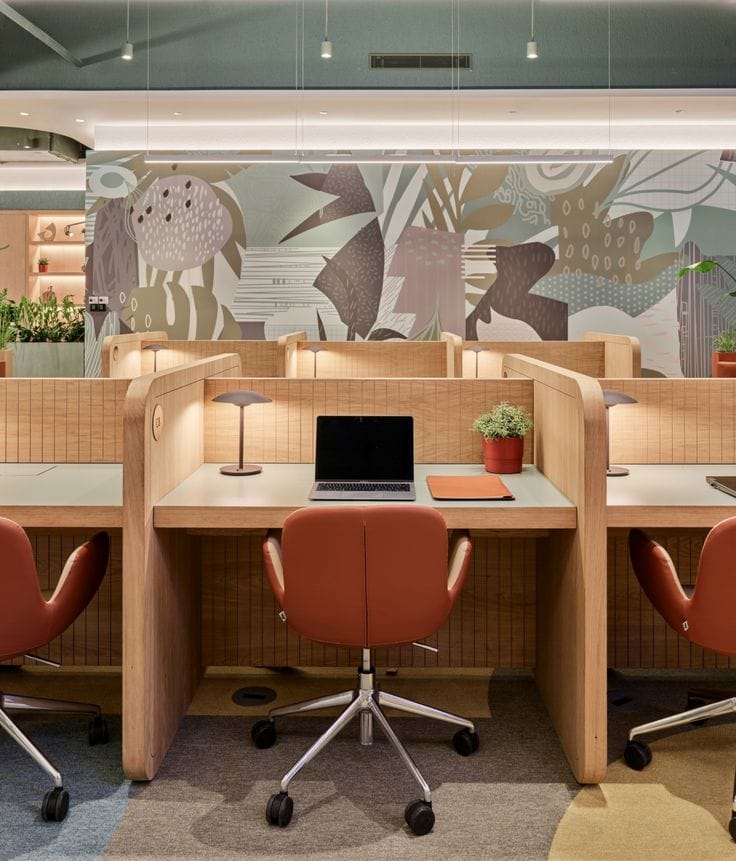
In the realm of office furniture design, understanding functional requirements is crucial for enhancing workplace efficiency and satisfaction. Each industry possesses its unique demands, which significantly influence the selection of office furniture. For example, a tech startup may prioritize collaborative workspaces, necessitating furniture that fosters communication and teamwork. On the other hand, a law firm may require more formal and structured office environments that accommodate private meetings and client consultations.
One of the primary considerations in office furniture design is the emphasis on ergonomics. This aspect is vital across various sectors as it directly impacts employee health and productivity. Ergonomic furniture, such as adjustable desks and supportive chairs, promotes better posture and reduces the risk of musculoskeletal disorders. Companies are increasingly recognizing that investing in ergonomically designed furniture can lead to a reduction in absenteeism, ultimately benefiting their bottom line.
Adaptability also plays a significant role in functional furniture design. The contemporary workplace often demands flexible solutions that can easily accommodate different activities, from individual tasks to group discussions. Modular furniture systems allow organizations to reconfigure their space as needed, fostering a dynamic environment that can evolve with the changing nature of work. Such adaptability ensures that the furniture remains functional, regardless of future adjustments in company structure or workflow practices.
Task-specific features are another crucial element to consider in office furniture design. Depending on the nature of the work being conducted—ranging from creative design to data analysis—furniture may need to include specialized features. For example, a graphic design firm may benefit from desks with built-in storage for artistic materials, while a financial consultancy might require desks equipped with cable management systems to keep the workspace organized. By aligning furniture choices with the specific needs of various industries, companies can enhance workflow, promote employee satisfaction, and create a supportive work atmosphere.
Space Layout Considerations
The layout of an office significantly influences the design and selection of office furniture, as it dictates the level of interaction, privacy, and efficiency within the workspace. Various layout styles, such as open-plan, cubicles, and private offices, each present unique requirements and advantages that can affect furniture choices and arrangement. An open-plan layout, characterized by its lack of physical barriers, encourages collaboration and communication among employees. In this scenario, furniture must be flexible and modular, allowing for easy reconfiguration to suit changing team dynamics and project needs. Options such as communal desks, shared tables, and movable partitions become essential to foster teamwork and creativity.
Conversely, cubicle layouts provide employees with a designated personal space while still allowing for some level of interaction. Here, furniture must balance individual privacy with accessibility. Heightened partitions, combined with ergonomic furniture options, can create a comfortable working environment while still promoting a sense of community within teams. Additionally, in such setups, it is imperative to pay attention to circulation paths to ensure employees can navigate the space without impediments. Thoughtful placement of desks, storage solutions, and communal areas will help in minimizing workflow disruptions.
Moreover, private offices prioritize confidentiality and focused work. The office furniture in these settings tends to be more traditional, often featuring solid desks, ergonomic chairs, and individual storage solutions that reflect the personal style of the employee while maintaining a professional appearance. In this layout, ensuring sufficient space around the furniture is vital not only for comfort but also for movement within the office.
Ultimately, selecting the appropriate office furniture design is intrinsically linked to understanding the specific layout of the workspace. By prioritizing the function and flow dictated by the arrangement, businesses can create environments that enhance productivity and collaboration among workers.
User Groups and Their Needs
Understanding various user groups within workplace environments is crucial for tailoring office furniture design that meets the distinct needs of each category. Different professional settings, such as administrative operations, healthcare environments, and hospitality sectors, feature unique workflows and requirements that impact furniture choices. By examining these user categories, we can better appreciate the significance of designing furniture solutions that promote comfort, accessibility, and productivity.
Administrative staff typically engage in tasks that involve prolonged periods of sitting, utilizing computers and other technologies. Their needs often center around ergonomic seating arrangements, height-adjustable desks, and organized storage solutions to facilitate an efficient workflow. Moreover, due to the collaborative nature of their work, these staff members benefit from furniture that promotes easy interaction, such as modular seating and flexible workstations that can adapt to team projects.
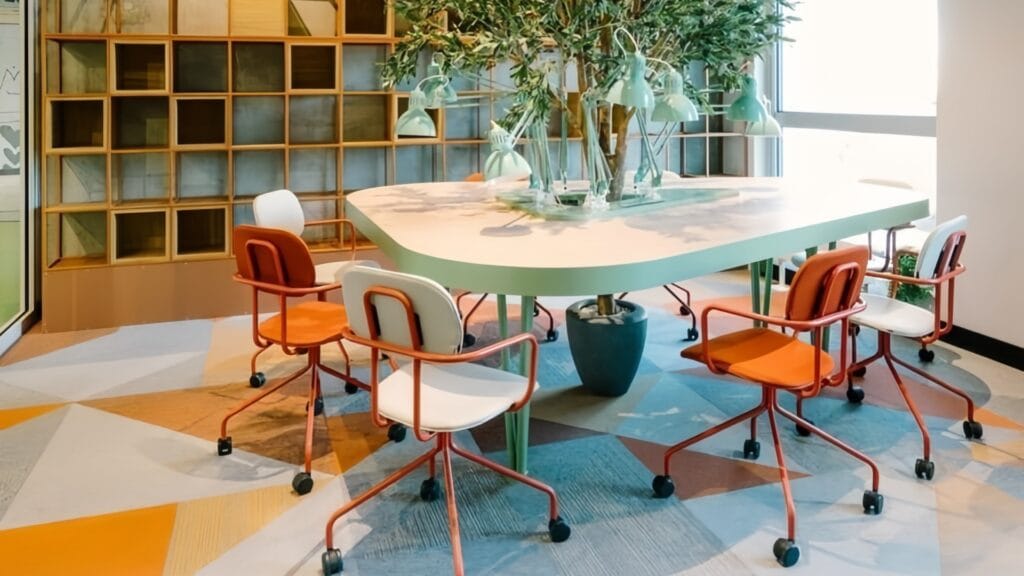
Healthcare professionals, on the other hand, operate in an environment that requires rapid mobility and easy sanitation. The furniture designed for hospitals and clinics must prioritize hygiene, with surfaces that are easy to clean and materials that are resistant to wear and tear. Additionally, adjustable furniture options are vital to accommodate a diverse patient population and varying height requirements of healthcare workers. Creating an environment that ensures the well-being of both staff and patients is fundamental to improving outcomes and enhancing the overall care experience.
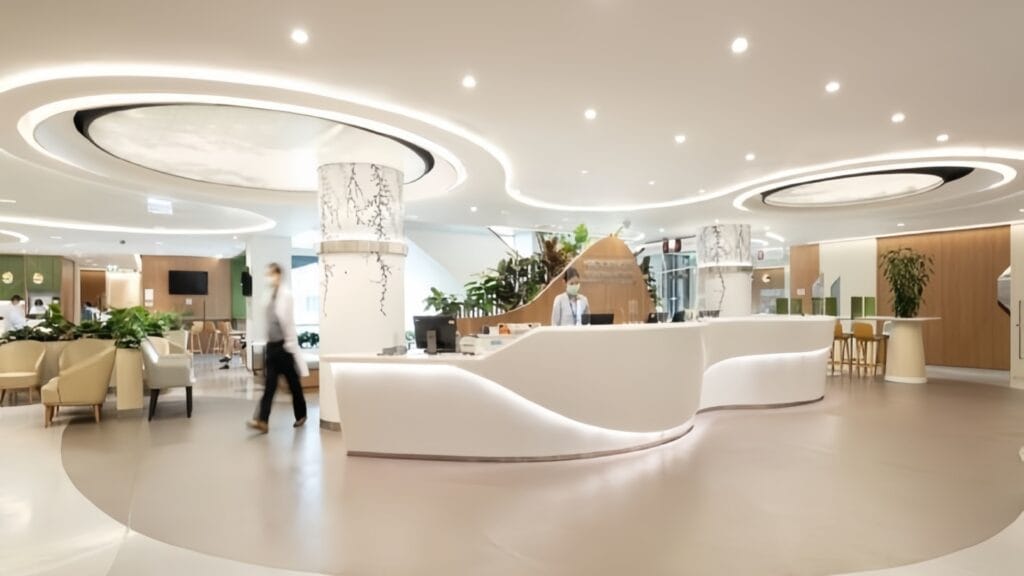
Lastly, hospitality workers serve in dynamic settings that attract various clientele. They require furniture that is not only functional but also aesthetically pleasing to create a welcoming atmosphere. The furniture must be comfortable for guests while supporting the operational efficiency of staff. Versatile seating arrangements, mobile tables, and modular design elements enable hospitality workers to adapt layouts for various events seamlessly.
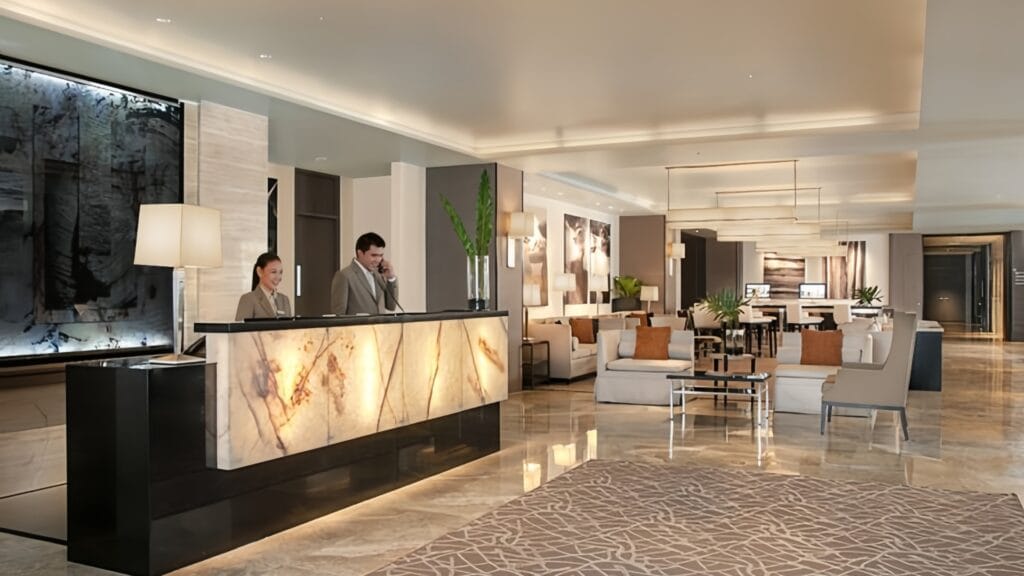
By recognizing and addressing the specific needs of these distinct user groups, businesses can enhance the design of office furniture. This sensitivity to the varied functionalities and associated effects on comfort and productivity provides a foundation for ultimately creating a more effective workplace environment.
Brand Positioning and Aesthetic Integration
Office furniture design is pivotal in defining and reflecting a company’s brand identity. Each piece of furniture selected can communicate a specific message about the organization’s values, culture, and mission. In today’s competitive marketplace, where visual impact can significantly influence client perception, intentional design choices are more crucial than ever. Integrating office furniture with brand positioning allows businesses to create a cohesive visual language that resonates with employees, clients, and stakeholders alike.
For instance, a tech startup prioritizing innovation and creativity might opt for modern, unconventional furniture designs that encourage collaboration and an open workflow. Bright colors, unique shapes, and adaptable spaces can convey a progressive and dynamic ethos. Conversely, a law firm may choose classic, elegant office furniture that exudes professionalism and reliability, utilizing dark woods and neutral colors to project stability and tradition. These choices do more than enhance aesthetics; they also serve to reinforce the underlying brand message, offering clients a tangible sense of what the company stands for.
A well-thought-out furniture arrangement can foster an environment conducive to specific brand-related activities. For example, companies emphasizing teamwork may find success in open-plan layouts with communal seating and shared workspaces. At the same time, organizations that value privacy and concentration might benefit from the inclusion of soundproof booths and individual workstations. By carefully aligning furniture styles and layouts with brand messaging, businesses can enhance their overall image and reinforce their identity within their respective sectors.
Effective integration of office furniture design with brand positioning not only attracts potential clients but also strengthens employee engagement by creating a workspace that aligns with the company’s core values. Thus, the strategic selection of office furniture becomes an essential facet of branding, capable of leaving a lasting impression in the corporate world.
Office Furniture Design for Hotels
Designing office furniture for hotels requires a strategic approach that caters to both the operational needs of the hotel and the comfort of guests. In hospitality environments, the integration of multi-functional spaces is essential. Hotel lobbies often serve multiple roles: a reception area, a meeting hub, and a relaxing lounge. Therefore, office furniture should adapt seamlessly to various functions. Modular furniture pieces, such as movable desks and stackable chairs, can facilitate quick transformations of spaces, ensuring that they meet the demands of different groups using those areas.
Comfort is paramount in the hotel industry; office furniture must not only be functional but also inviting. Ergonomic chairs and adjustable desks are increasingly prioritizing guest well-being, promoting productive work environments that do not compromise comfort. Including lounge elements, such as cozy seating arrangements with a blend of privacy and openness, encourages guests to use these spaces for work or leisure, enhancing their overall experience within the hotel.
Durability is another critical consideration in hotel office furniture design. Hotel environments often experience heavy foot traffic, making it essential to select materials that withstand wear and tear while maintaining a polished appearance. High-quality fabrics and sturdy materials like metal or solid wood not only enhance durability but also contribute to long-term cost efficiencies. Furthermore, incorporating easy-to-clean surfaces can help maintain cleanliness, which is vital in hospitality settings.
Finally, the aesthetics of office furniture should reflect the hotel’s brand image. The furniture design should harmonize with the overall interior decor, creating a cohesive look that resonates with both guests and staff. Whether a hotel adopts a modern, minimalist approach or a more traditional, luxurious design, the office furniture should complement its ambiance. By carefully considering these factors, hotels can create welcoming, functional, and stylish workspaces that cater to diverse business scenarios and enhance the guest experience.
Office Furniture Design for Hospitals
In the intricate environment of hospitals, office furniture design must accommodate a myriad of specialized requirements that cater to both patient care and staff efficiency. The functionality of furniture plays a crucial role in creating an environment that prioritizes comfort and accessibility while ensuring optimal workflow for medical professionals. In this context, adaptability is key. Furniture pieces should be versatile enough to serve various functions, supporting the unique needs of patients, doctors, and administrative staff alike.
One vital consideration in hospital office furniture design is the comfort of patients. Waiting areas, examination rooms, and consultation spaces should feature seating that not only provides physical support but also promotes a soothing atmosphere. Ergonomic chairs, for instance, can alleviate discomfort during extended waiting times, thereby enhancing the overall patient experience. Similarly, adjustable furniture such as desks and workstations allows medical staff to maintain healthy posture and adapt to their specific tasks throughout the day.
Hygiene and safety are paramount in hospital settings, and thus, office furniture must be constructed from materials that are easy to clean and resistant to bacterial growth. Surfaces made from non-porous materials can significantly reduce the risk of cross-contamination. Furthermore, designs should incorporate rounded edges and stability features to minimize accidents or injuries. These safety considerations are essential for both patients and staff alike.
Lastly, the functionality of storage solutions cannot be overlooked. Adequate and accessible storage minimizes clutter, streamlining workflows and enhancing operational efficiency. Modular storage units that can be rearranged or expanded as needed can effectively adapt to the hospital’s evolving requirements. By focusing on these core aspects—comfort, hygiene, safety, and functionality—hospitals can create an environment where both patients and medical professionals can thrive. In conclusion, thoughtful office furniture design tailored to the specific needs of a hospital environment can significantly impact patient care and staff productivity.
Office Furniture Design for Corporations
In contemporary corporate environments, office furniture design plays a significant role in fostering collaboration and enhancing productivity. As businesses increasingly recognize the importance of creating versatile workspaces, the focus has shifted toward developing office designs that accommodate both individual tasks and team collaborations. An effective office layout integrates furniture options that not only cater to the needs of employees but also align with the organization’s professional image.
When designing office spaces for corporations, it is essential to prioritize flexibility. This can be achieved through the use of modular furniture systems that allow for easy reconfiguration as project requirements change. For instance, collaborative workspaces can feature movable desks and seating arrangements that encourage spontaneous interactions among team members. Additionally, incorporating elements such as adjustable height tables enables employees to personalize their work environments, thereby enhancing comfort and promoting productivity in both standing and seated positions.
Another important consideration is facilitating remote work. With the rise of hybrid work models, office furniture should support seamless transitions between in-office and remote collaboration. This can be accomplished by integrating ergonomic furniture that supports remote employees accessing the office occasionally. An office equipped with designated areas for video conferencing and group brainstorming sessions can further enhance teamwork while keeping a professional ambiance that reflects the corporation’s brand values.
Moreover, it’s crucial to create quiet zones within the office design to boost concentration and individual productivity. These spaces can be furnished with sound-absorbing materials and comfortable seating, providing employees with a respite from the hustle and bustle of traditional office environments. By carefully considering these aspects, corporations can create a balanced office furniture design that meets varying needs while reinforcing teamwork and individual focus, ultimately leading to greater organizational success.
Conclusion: The Importance of Tailored Design
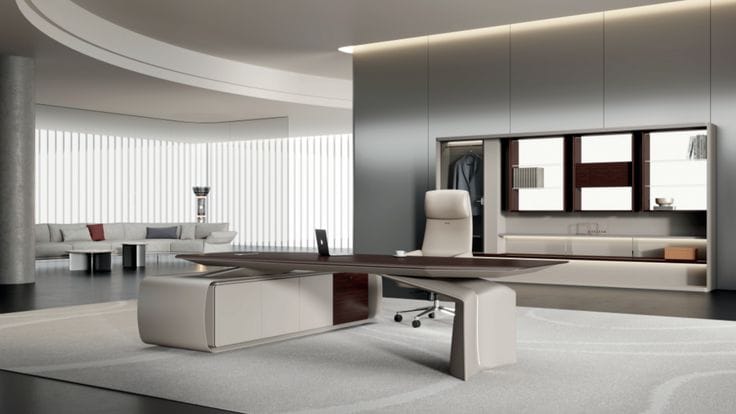
In the contemporary business landscape, the design of office furniture plays a crucial role in shaping a functional and engaging work environment. Tailoring office furniture design to suit diverse business scenarios is not merely a matter of aesthetics; it is fundamentally about optimizing space utilization, enhancing employee productivity, and fostering a positive corporate culture. As outlined throughout this discussion, businesses must consider various factors such as the nature of their operations, employee workflows, and the overall ambiance they wish to create. Each of these elements contributes to the effective deployment of office furniture that aligns with organizational objectives.
Additionally, the significance of adaptable and versatile office furniture cannot be overstated. In an era where companies often face fluctuating demands and changing team dynamics, flexibility in furniture design enables businesses to respond rapidly to such transitions. Solutions that include modular furniture options allow organizations to easily reconfigure their spaces, thereby reinforcing the necessity of thoughtful design that accommodates evolving needs. This adaptability not only ensures functional efficiency but also supports the well-being of employees by promoting mobility and collaboration.
Furthermore, investing in tailored office furniture promotes employee morale and satisfaction, as personalized workspaces can significantly impact job performance. An environment that reflects the brand’s values while catering to the specific activities of its staff will likely yield higher engagement levels and ultimately enhance overall productivity. Therefore, business leaders and space planners must prioritize the customization of office environments. In summary, understanding the unique requirements of varied business scenarios and investing in bespoke office furniture design is essential for creating functional and aesthetically pleasing workspaces that meet organizational needs while fostering a thriving workplace culture.

